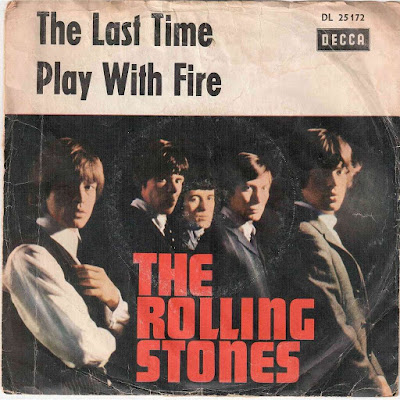Escrita por
Sonny Bono, foi lançada em 9 de julho de 1965 no primeiro disco da
dupla Look at us. Também foi lançada em compacto com It's gonna
rain como Lado B. Esse compacto chegou ao número 1 dos charts pop
americanos em agosto de 1965 e ficou três semanas no topo. Vendeu
mais de um milhão de cópias na época e tambem foi número 1 no
Canada e número 1 no Reino Unido.
É a canção
de número 444 da lista das 500 maiores canções de todos os tempos
da revista Rolling Stone.
Sonny Bono
trabalhava como Compositor e produtor para Phil Spector. Então ele
resolveu escrever essa canção pra ele mesmo e sua esposa, Cher, uma
noite no basement da casa deles. O Wrecking Crew participou da
gravação. Hal Blaine foi o baterista. I got you babe se tornou a
música da carreira deles e a gravação definiu o começo do
movimento contracultural hippie.
A canção
era o sentimento oporto de It ain't me babe, de Bob Dylan. A
diferença era a letra complexa de Dylan e simples de Sonny. Ele
começava com “They”, sugerindo pessoas que colocavam barreiras
no romance deles. No entanto, enquanto a estrutura da música de
Dylan era simples, a de Sonny era mais ambiciosa estruturalmente.
Com o tempo
de valsa, as vezes escutamos um oboé tocado por Warren Webb. Os
vocais se alternam, deixando a canção mais interessante.
Além de
número 1 nos três países já citados, foi também número 3 na
Australia, 6 na Austria, 12 na Belgica, 8 na Finlandia, 7 na França,
3 na Alemanha, 2 na Irlanda, 4 na Holanda, 1 na Nova Zelandia, 6 na
Noruega, 5 em Singapura, 5 na Africa do Sul, 5 na Suécia e 7 na
Suíça.
20 anos
depois, em 1985, o UB40 lançou uma versão em conjunto com Chrissie
Hynde, dos Pretenders. Essa versão saiu no disco Baggariddim, do
UB40, de 1985 e também dos Pretenders The Singles, de 1987. A versão
deles chegou ao número 1 dos charts britanicos e número 28 dos
charts pop americanos.
Em 1993,
Cher gravou uma versão com Beavis and Butthead, do desenho animado.
Essa gravação chegou ao TOP40 no Reino Unido, Belgica e Suécia,
assim como TOP10 na Holanda.
A letra:
They say we're
young and we don't know
We won't find out until we're grown
Well I don't know if all that's true
'Cause you got me, and baby I got you
Babe
I got you babe
I got you babe
They say our love won't pay the rent
Before it's earned,
Our money's all been spent
I guess that's so, we don't have a pot
But at least I'm sure
Of all the things we got
Babe
I got you babe
I got you babe
I got flowers in the spring
I got you to wear my ring
And when I'm sad, you're a clown
And if I get scared, you're always around
Don't let them say your hair's too long
'Cause I don't care,
With you I can't go wrong
Then put your little hand in mine
There ain't no hill or mountain
We can't climb
Babe
I got you babe
I got you babe
I got you to hold my hand
I got you to understand
I got you to walk with me
I got you to talk with me
I got you to kiss goodnight
I got you to hold me tight
I got you, I won't let go
I got you to love me so
I got you babe
I got you babe
I got you babe
I got you babe
We won't find out until we're grown
Well I don't know if all that's true
'Cause you got me, and baby I got you
Babe
I got you babe
I got you babe
They say our love won't pay the rent
Before it's earned,
Our money's all been spent
I guess that's so, we don't have a pot
But at least I'm sure
Of all the things we got
Babe
I got you babe
I got you babe
I got flowers in the spring
I got you to wear my ring
And when I'm sad, you're a clown
And if I get scared, you're always around
Don't let them say your hair's too long
'Cause I don't care,
With you I can't go wrong
Then put your little hand in mine
There ain't no hill or mountain
We can't climb
Babe
I got you babe
I got you babe
I got you to hold my hand
I got you to understand
I got you to walk with me
I got you to talk with me
I got you to kiss goodnight
I got you to hold me tight
I got you, I won't let go
I got you to love me so
I got you babe
I got you babe
I got you babe
I got you babe
Sonny and Cher:
UB40 and
Chrissie Hynde:
Cher com Beavis
and Butthead:



















